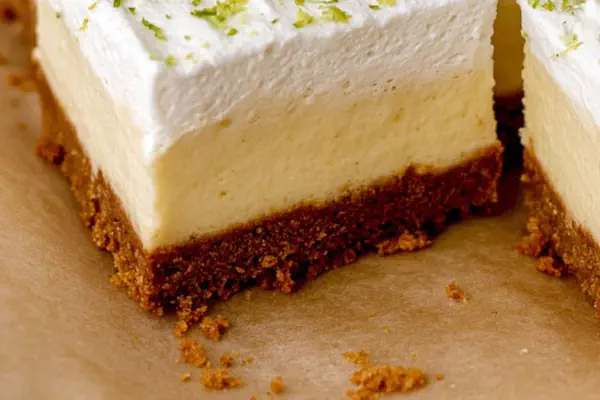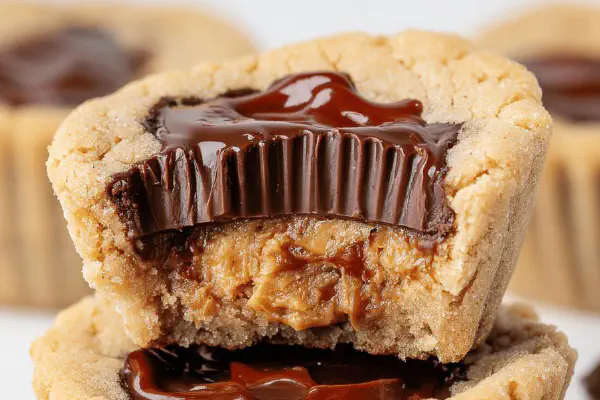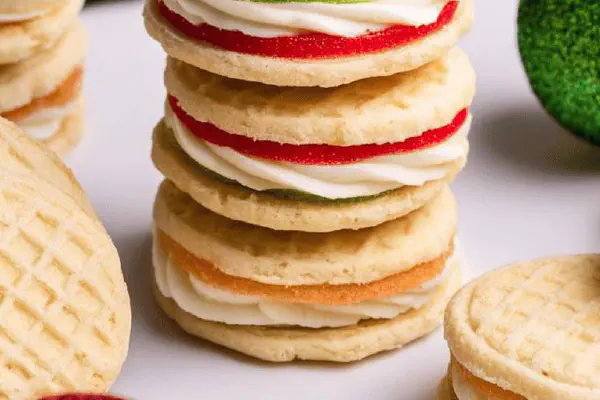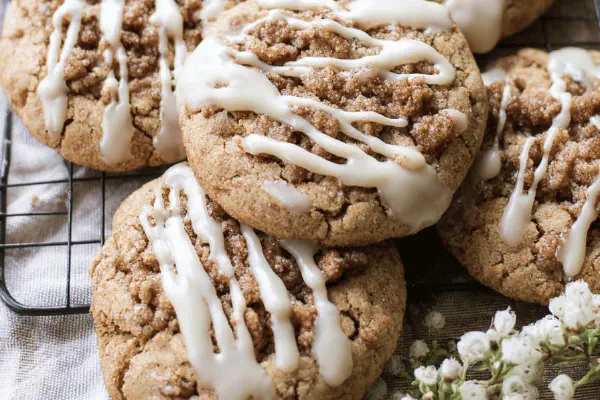Funfetti Oreo Cookie Bars
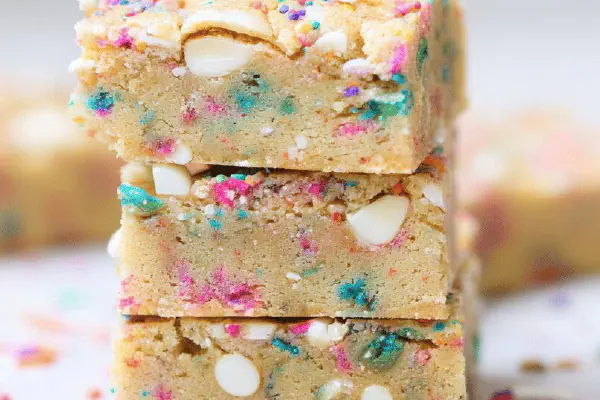
By Emma
Certified Culinary Professional
Ingredients
- 1 1/4 cups all-purpose flour
- 3/4 cup cake flour
- 2 tablespoons cornstarch
- 1/2 teaspoon baking soda
- 1/2 teaspoon baking powder
- 1/2 teaspoon fine sea salt
- 1 cup unsalted butter softened
- 1 1/4 cups granulated sugar
- 2 large eggs
- 2 large egg yolks
- 1 teaspoon vanilla almond extract
- 25 Oreo cookies divided
- 1 cup white chocolate chips
- 1/4 cup rainbow sprinkles
About the ingredients
Method
- Preheat oven to 320°F. The slight temp drop slows browning for moist middle.
- In large bowl, whisk together all-purpose flour, cake flour, cornstarch, baking soda, baking powder, salt until uniform. Sets up the structure; no clumps lurking.
- In stand mixer bowl fitted with paddle, cream butter and sugar on medium about 3 minutes. You want light, fluffy, no gritty sugar spots. Scrape down sides mid-creaming.
- Add eggs, egg yolks, and vanilla almond extract. Mix medium speed until merged but don’t overbeat or bubbles collapse. Use spatula to clear paddle blade and sides if buildup.
- Shift mixer to slow. Introduce flour mixture slowly, quarter cup increments. Mix until just combined after each addition. Overworking means tough bars; stop at streaks disappearing.
- Fold in 15 Oreos roughly chopped, white chocolate chips, and sprinkles by hand or brief low mix. Preserve bits intact for textural pops later.
- Spray 9x13 pan well with nonstick spray. Press dough evenly into pan using clean hands or flat measuring cup base. Uniform thickness means even baking.
- Crumble remaining 10 Oreos and press onto dough surface. Adds crunch contrast and visual appeal.
- Bake at 320°F for 18-20 minutes. Look for edges set but pale, center with moist crumbs clinging on toothpick. Listen for gentle crackling sounds and smell rich vanilla and baked sugar aromas.
- Let cool completely in pan. Bars firm up as they rest. Cut into squares when fully cool—cutting sooner leads to saggy mess.
- Store airtight at room temp up to 4 days or freeze wrapped for longer stash.
Cooking tips
Chef's notes
- 💡 Watch mixing speed closely; too fast in egg stage causes bubbles popping, bars deflate. Cream butter and sugar at medium—not fast or slow. Light, fluffy texture depends on fully creamed butter. Scrape bowl often. Overmix after flour addition toughens; add dry slow in quarters. Flour clouds? Stop, fold gently.
- 💡 Oven temp lowered from usual 325°F to 320°F. Avoid crunchy edges; subtle scent changes signal doneness. Smell threshold—rich vanilla aroma, baked sugar scent. Look for pale edges not browning. Toothpick with moist crumbs clinging—not wet batter. Crackling sound faint, then fades—start check at 18 minutes.
- 💡 Use spoon or hands to press dough evenly; uneven thickness burns or leaves gooey parts. Dough sticky but workable; light powdering on hands if needed. Ignore steel spatulas; they compress too much. Oreo topping crumbled, pressed down gently to embed—not flatten or chips disappear. Adds texture contrast mid-bite.
- 💡 Substitutions ok but affect texture—brown sugar ups chew, but moister dough slows bake time. Vanilla almond extract swapped for pure vanilla or mix both but adjust amounts downward. White chocolate chips optional; butterscotch or milk chocolate chunks work but alter sweetness. Skip sprinkles for cleaner bite; no dye.
- 💡 Cooling non-negotiable. Bars still warm slice gummy, smear messy edges. Cool fully in pan—knife cleans between cuts. Store airtight, room temp for days okay but fridge speeds staling. Freeze well wrapped. Reheat briefly to soften but no microwave or chips melt wild, lose structure.
Common questions
How to tell if bars done?
Edges pale, not browned, slight crackle fades. Toothpick with moist crumbs, no raw dough. Smell rich vanilla plus sugar baked. Sounds quiet then stop. Start checking at 18 min. Oven varies, watch cues.
Can I skip cake flour or cornstarch?
Cake flour lightens crumb; no cornstarch means firmer bars. Use 2 cups all-purpose minus 2 tablespoons instead. Texture less tender. Fine but not quite same. Keep powder sifted to avoid lumps.
What if bars turn tough?
Overmixing after flour addition main culprit. Speed too high or adding dry too quick. Fold gently. Also butter too soft or over-creamed. Keep mixing slow once wet/dry combined. Rest dough before baking helps gluten relax.
How to store leftovers?
Airtight container room temp fine for 4 days, fridge keeps longer but dry faster. Freeze well wrapped tight. Reheat slightly to soften cut edges but avoid microwave if possible—chips melt unevenly, mess up texture.
